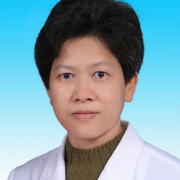-
- 王新军副主任医师
-
医院:
海南医学院第一附属医院
科室:
内分泌科
- 小儿巴特综合征的实验室检查
- 巴特综合征的产前诊断
- 低血糖的安全性和死亡率
- 全国9大中药品牌抽检产品超7成...
- 芒果具有降低血糖的作用
- 省药健行协会对糖尿病患者义诊 ...
- 海口晚报:医生支招助你节后调节...
- 海南医学院附属医院内分泌科简介
- 关爱甲状腺 健康每一天
- 荟萃分析:DPP-4抑制剂能降...
- 多吃葡萄有好处
- 多吃葡萄有好处 ...
- 甜的水果糖尿病患者不能吃吗?
- 糖尿病患者的健康食品
- 糖尿病患者可以吃水果吗?
- 我院2013年获得9项省级继续...
- 糖尿病发病率持续攀升,海医附院...
- 2013年ADA糖尿病诊疗指南
- 糖尿病防治90年回眸
- 2012 胜选演讲(中英文对照...
- 马英九是如何看待美国大选的
- 2012年度海南省卫生高级职称...
- 胰岛素治疗90周年回顾(我们应...
- 美国2011年处方量最大的25...
- 非洲裔的超重妇女TG / HD...
- 肥胖小鼠Roux-en-Y胃旁...
- 健康成人血管内皮功能与血清尿酸...
- 高血压男性退伍军人体重指数、运...
- 非侵入性检测动脉顺应性和踝臂指...
- AusDiab研究:看电视时间...
- 美国甲状腺协会妊娠期和产后甲状...
- 经络的骗局
- 连续血糖监测:在瑞士的报销
- 糖尿病自我管理支持干预技术成功...
- 连续血糖监测(CGM)在西班牙...
- 用超快速胰岛素给药方法的人工胰...
- 应用胰岛素大剂量向导是否可以改...
- 2012年ADA糖尿病诊疗指南
- DPP-4抑制剂概况
- 甲巯咪唑(他巴唑)片 说明书
- 肥胖的2型糖尿病患者Roux-...
- 在大型队列数据库中,接受肠促胰...
- 在非糖尿病男性混合餐后肠促胰岛...
- 在磺脲类药物控制不良的2型糖尿...
- 在糖尿病患者,进餐时胰高血糖素...
- 连续皮下输注胰高血糖素样肽-1...
- 在非肥胖2型糖尿病患者及继发于...
- 胰高血糖素样肽-1和二甲双胍治...
- 方舟子:为什么“神医”大都是“...
- 尿崩症
- 在具有危险因素的肥胖患者早期干...
- 具有危险因素的个体的减肥手术
- 低血糖的安全性和死亡率
- 近期预防心血管疾病的试验:回答...
- 写在中草药被欧盟扫地出门的时候
- 胰岛素或许具有治疗阿尔茨海默氏...
- 糖尿病患者用ARB降压与用CC...
- 老年糖尿病患者前部缺血性视神经...
- 新的糖尿病指南强调治疗的个体化
- 中国儿童青少年身高正常值范围(...
- 根据基于BRAFV600E突变...
- 英国特伦特河畔斯托克库欣病50...
- 维生素D、甲状旁腺激素与骨骼健...
- 矮小症临床路径
- 在意大利南部关于产后甲状腺炎的...
- 1型糖尿病患者维生素D缺乏与冠...
- 2型糖尿病患者食盐摄入量与死亡...
- 实验推导代谢症候群的定义改善心...
- 慢性肾病患者在进行急诊心脏手术...
- 扩张型心肌病患者糖尿病与心肌胶...
- 重症监护病房血糖控制的决策支持...
- 高胰岛素血症在代谢综合征中的作...
- 胰岛素的仿制药
- 肥胖专家呼吁关注内脏肥胖和肝脏...
- 高密度脂蛋白胆固醇水平与男性寿...
- 运动改变代谢综合征中高密度脂蛋...
- 体力活动可改变多种HDL-修饰...
- 蛋白质变异与2型糖尿病相关
- 研究认为维生素D和糖尿病之间没...
- 束带装置有了更广泛的指征: F...
- FDG-PET研究发现牙周病与...
- 胆胰分流术使糖尿病人长期获益
- 指尖血酮体检测在糖尿病酮症酸中...
- 矮小是一种可治疗的内分泌疾病
- BMI匹配的糖耐量正常的胰岛素...
- 糖尿病患者无症状心肌缺血检测(...
- 急性胰高血糖素血症对健康人肝脏...
- 2011年ADA糖尿病诊疗指南
- 青少年中肥胖和2型糖尿病对心脏...
- 糖尿病的综合治疗
- 阿司匹林、血压、脑血管事件与糖...
- 2型糖尿患者中高血压和高心血管...
- 新的复方减肥药物曙光在前
- 2010年ADA糖尿病诊疗指南
- 糖尿病大疱
- 糖尿病治疗标准(ADA,200...
- 美国医师协会指南不建议胰岛素强化治疗
- 作者:王新军|发布时间:2011-03-01|浏览量:763次
ACP Guideline Discourages Intensive Insulin Therapy
美国医师协会指南不建议胰岛素强化治疗
February 14, 2011 ? The American College of Physicians (ACP) has issued a new clinical guideline for glycemic control in hospitalized patients that discourages the use of intensive insulin therapy (IIT). 海南医学院附属医院内分泌科王新军
2011年2月14日?美国医师协会(ACP)发布了新的住院患者血糖控制临床指南,不再建议胰岛素强化治疗(IIT)。
The guideline is based on a systematic review, which concluded: "No consistent evidence demonstrates that IIT targeted to strict glycemic control compared with less strict glycemic control improves health outcomes in hospitalized patients. Furthermore, IIT is associated with increased risk for severe hypoglycemia."
该指南基于一个系统回顾推断:“没有一致的证据表明胰岛素强化治疗严格控制血糖能比较宽松的血糖控制可改善住院患者的预后,此外,胰岛素强化治疗与严重低血糖的风险增加有关。。“
The clinical practice guideline, published online February 14 in the Annals of Internal Medicine, recommends against "using intensive insulin therapy to strictly control blood glucose in non-surgical intensive care unit (SICU)/medical intensive care unit (MICU) patients with or without diabetes mellitus."
该临床实践指南在线发表在2月14日的内科医学年鉴上,该指南反对“在非外科重症监护病房(SICU)/内科重症监护病房(MICU)使用强化胰岛素治疗严格控制糖尿病患者或非糖尿病患者的血糖。“
The guideline also recommends against using IIT rather than conventional glucose control to normalize blood glucose in patients in the SICU/MICU, whether they have diabetes or not. Finally, the guideline recommends a target blood glucose level of 7.8 to 11.1 mmol/L (140 - 200 mg/dL) if insulin therapy is used in patients in the SICU/MICU.
该指南也反对在SICU/MICU的患者应用胰岛素强化治疗,仍然推荐传统的血糖控制方案,无论患者有无糖尿病。最后,指南建议SICU/MICU的患者使用胰岛素治疗的目标血糖水平为7.8~11.1 mmol / L(140- 200 mg/dL)。
Data supporting the new guideline were drawn from a systematic review by Devan Kansagara, MD, and colleagues. Their meta-analysis of 21 trials in ICU, perioperative care, myocardial infarction, and stroke or brain injury settings found that IIT did not improve short-term mortality, long-term mortality, infection rates, length of stay, or the need for renal replacement therapy. Furthermore, IIT was associated with a 6-fold increase in risk for severe hypoglycemia in all hospital settings.
支持新指南的数据来自Devan Kansagara博士及其同事的一项系统综述。他们对在ICU、围手术期、心肌梗死、卒中或脑损伤的患者中进行的21项试验进行了荟萃分析发现,强化血糖控制并没有改善短期死亡率、长期死亡率、感染率、住院天数或肾脏替代治疗。此外,在所有医疗机构中,强化血糖控制还伴随着严重低血糖的风险增加了6倍。
The ACP Clinical Guidelines Committee, chaired by Paul Shekelle, MD, PhD, used the data to shape the 3 recommendations for the use in IIT in hospitalized patients with or without diabetes.
美国医师协会临床指南委员会主席Paul Shekelle博士根据研究的数据修改了住院糖尿病患者或非住院患者胰岛素强化治疗的3项建议。
Current Results Consistent With NICE-SUGAR Trial
目前的结果与NICE-SUGAR试验的结果一致
The ACP paper marks another brake on the formerly fast rush to adopt tight glycemic control for critically ill adults. This followed a 2001 study by van den Berghe et al, who reported that targeting normoglycemia in ventilated patients in the SICU reduced the risk for in-hospital death by one third.
美国医师协会指南给先前如火如荼的重症病人采用胰岛素强化治疗又踩了刹车。在此之前van den Berghe等于2001年报告,将SICU机械通气的患者血糖控制正常可减少医院死亡三分之一的风险。
However, this result was not confirmed by the subsequent Normoglycemia in Intensive Care Evaluation ? Survival Using Glucose Algorithm Regulation (NICE-SUGAR) randomized comparison of intensive vs conventional glucose control.
然而,这一结果并没有得到NICE-SUGAR研究随机比较强化血糖控制与传统血糖控制结果的证实。
Simon Finfer, FRCP, FJFICM, one of the NICE-SUGAR investigators, told Medscape Medical News that the new ACP guideline reinforces both the American Diabetes Association (ADA) guidelines for diabetes care in hospital (glucose target of 140 - 180 mg/dL, 7.8 - 10 mmol/L) and the similar Institute for Healthcare Improvement guidelines.
Simon Finfer是NICE-SUGAR研究者之一,他告诉Medscape医学新闻,新的ACP指南再次强调了美国糖尿病协会指南关于住院患者的控制目标(血糖目标140 - 180 mg/dL, 7.8 - 10 mmol/L)及相似的医疗改进研究所的指南。
ADA Weighs in on the ACP Guidelines
ADA和ACP指南基本一致
Sue Kirkman, MD, senior vice president , ADA, told Medscape Medical News that the ACP reviewers did a very thorough and systematic review of the data and that the new guideline is basically consistent with the ADA recommendations.
Sue Kirkman博士是ADA的高级副主席,告诉Medscape医学新闻说,ACP的作者们对数据做了非常详尽和系统的回顾,新指南基本与ADA的建议一致。
Dr. Kirkman said, "The upper limit of the range is higher than we"d recommend. It"s not clear why they picked 200 mg/dL rather than 180 mg/dL, and 140 to 180 mg/dL was the target for the control group in the NICE-SUGAR study." Dr. Kirkman explained that 180 mg/dL is also the point at which the kidneys start to spill glucose. Theoretically, patients could get dehydrated above that level, but this would mostly be a risk at much more elevated blood glucose readings, she explained.
Kirkman博士说:“在这一范围内的上限高于我们以前ADA推荐的标准。目前还不清楚他们为什么选择200 mg/dL,而不是180 mg/dL,或者140~180 mg/dL以NICE-SUGAR研究的对照组作为血糖控制目标。”柯克曼博士解释说,180 mg/dL也是肾脏漏出葡萄糖的阈值。从理论上说,病人血糖超过这个水平可能会脱水,但血糖水平再升高会有较大风险,她解释说。
"In actuality, there isn"t much difference between the 2 recommendations," Dr. Kirkman said.
The ACP guideline is expected to affect not only diabetes specialists but also hospitalists, critical care specialists, and primary care providers.
“实际上,在这两个建议之间并没有太大的差别”,博士柯克曼说。
ACP指南是希望不仅影响糖尿病专家,更想影响医院管理专家、、危重病专家和初级保健人员。
Dr. Kirkman said, "I think some may still want to aim for the lower range of the ADA recommendations (110 - 140 mg/dL) for some patients, such as post?coronary artery bypass graft patients in the ICU. The ACP statement and other guidelines, such as ADA"s, acknowledge that severe hyperglycemia (>200 mg/dL) is certainly linked to adverse outcomes for hospitalized patients, so one would hope that the pendulum won"t swing too far towards not being concerned with hyperglycemia."
Kirkman博士说:“我觉得有些专家可能还想在某些患者中降低ADA建议的控制范围(110~ 140 mg/dL),如ICU中冠状动脉旁路移植后的患者。在ACP和其他指南(如ADA)的立场中承认,严重高血糖(>200 mg/dL)肯定对住院的病人会带来不利的结果,所以人们希望钟摆摆动不会太远以免血糖过高。“
Both Dr. Finfer and Dr. Kirkman noted that the ACP guideline applies only to patients in the ICU.
Dr. Kirkman said, "By far the biggest unanswered question is what the goals should be for non-ICU patients, which is most patients in the hospital. Also, the links of hypoglycemia to adverse outcomes need to be better understood. Is this causative, or is it a marker for a sicker patient? Better systems to prevent hypoglycemia are needed."
Finfer博士和Kirkman博士均指出,ACP指南仅适用于ICU的病人。
Kirkman博士说,“目前最大的尚未回答的问题是对于非ICU的病人其目标该是多少,这些患者占住院患者的大多数。此外,低血糖与不良结局关联需要更深入的探讨。这是原因,还是病人病情加重的一个标志?我们需要防止低血糖更好的系统。”
Ann Intern Med. 2011;154:260-267, 268-282.
TA的其他文章:




